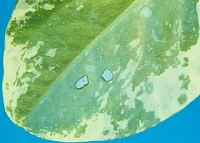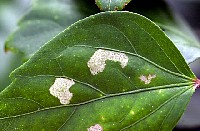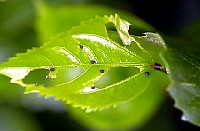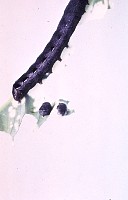| In initial infestations of lepidopterous larvae (caterpillars), newly hatched larvae feed on the superficial tissues of the lower leaf surfaces producing a "window" effect in the leaf surface. This is commonly seen with schefflera, hibiscus and Peperomia. |




